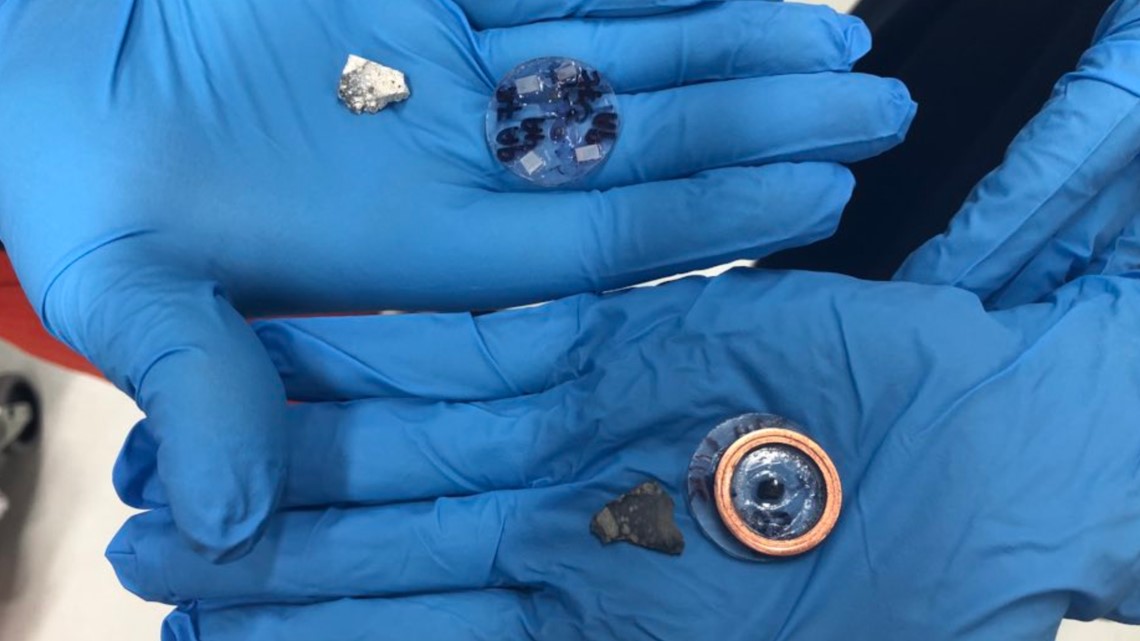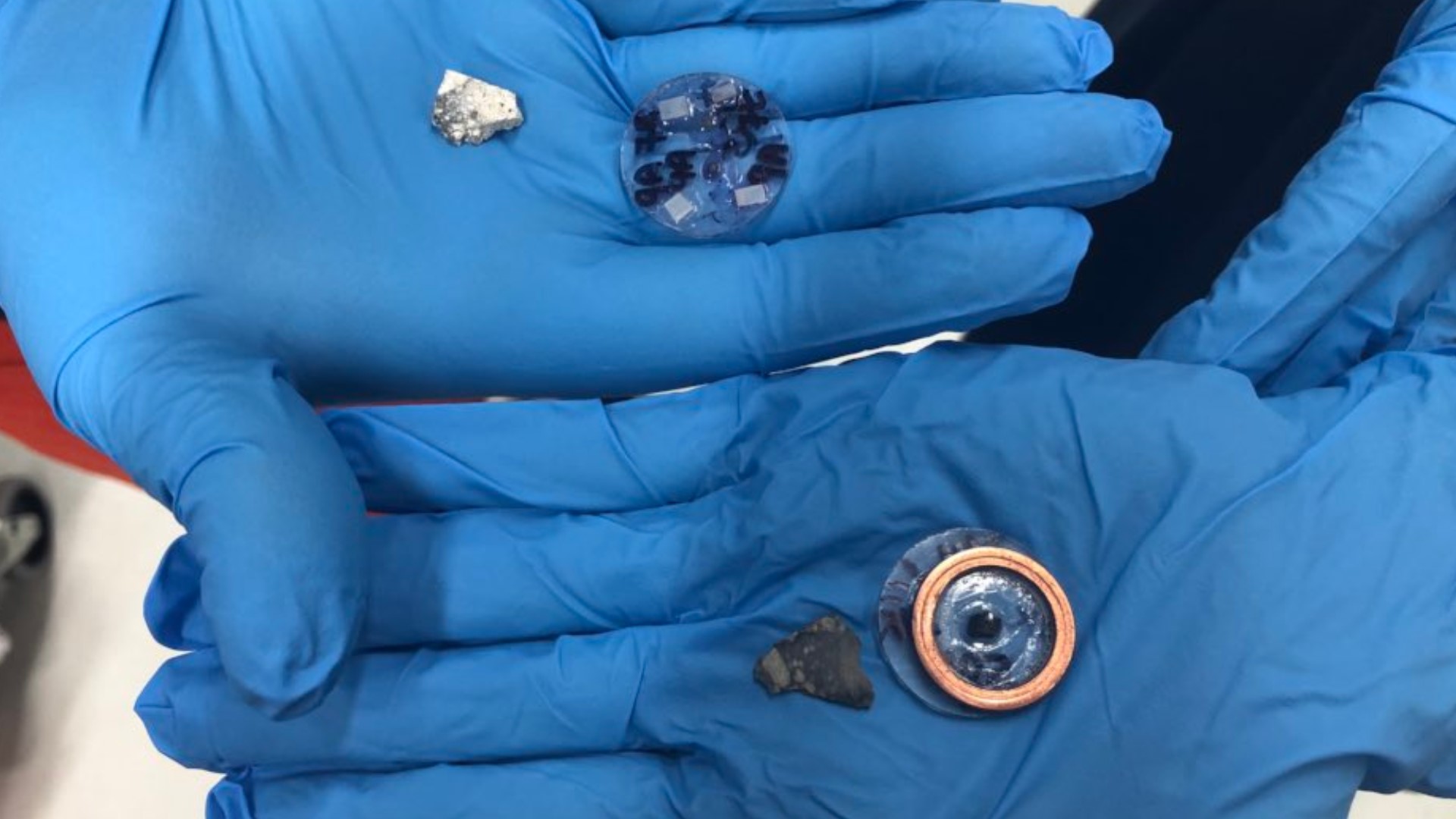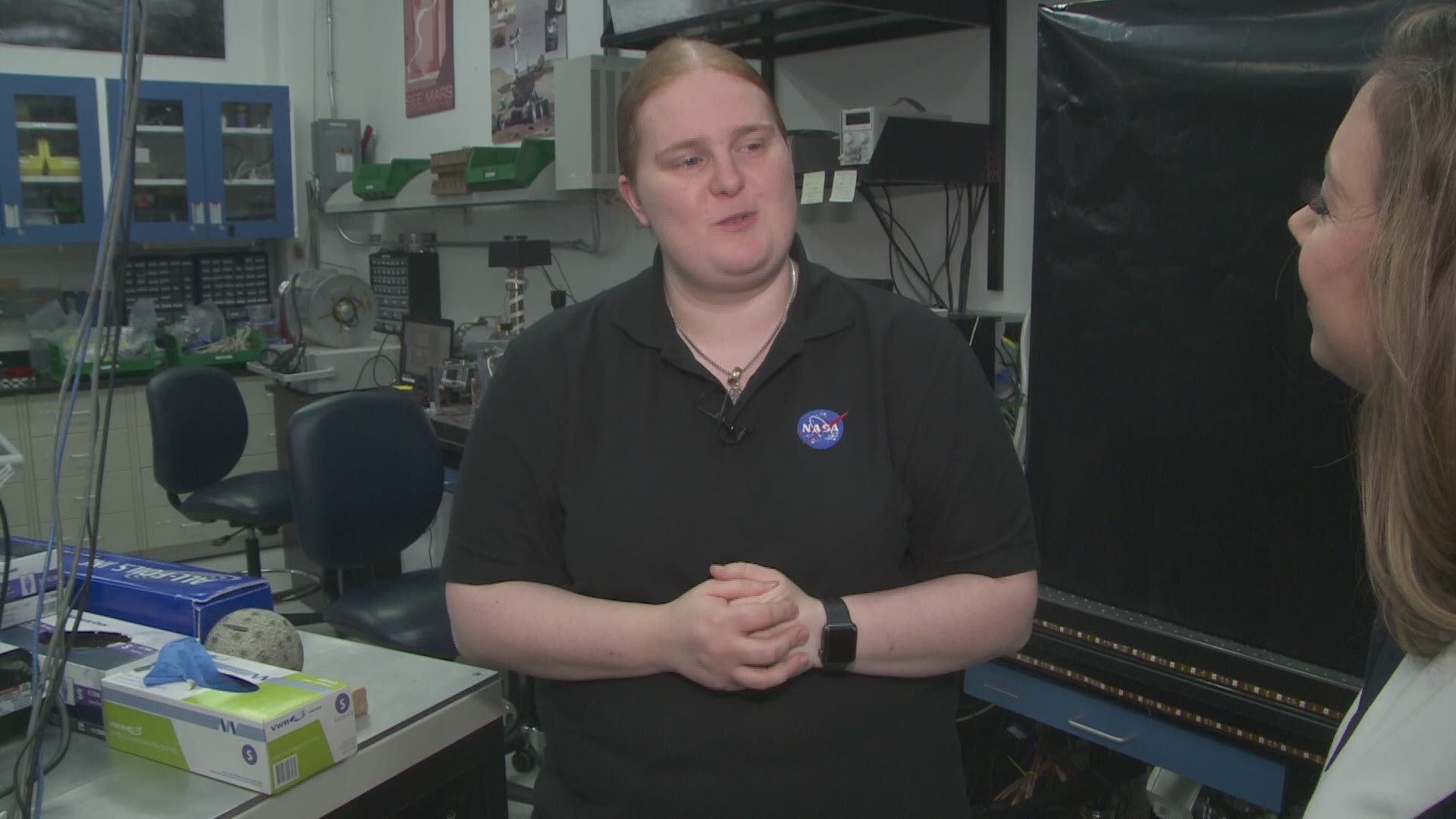These are tiny pieces of the Moon. Smaller than a pea, they were brought back to Earth during Apollo 16 nearly half a century ago in 1972.
They are small, but they are mighty, holding billions of years of information.
Dr. Natalie Curran works in NASA’s MNGRL lab, which stands for Mid-Atlantic Noble Gas Research Laboratory. Her mission is to look at the ages of the lunar rock – which opens up a world of new knowledge about our Moon, the Earth, and our solar system.
The Moon and Earth are roughly the same age, but rock samples from the Moon are much, much older than any rock that you or I will ever encounter in our back yard, neighborhood, or on a hike.
“Some of the youngest rocks that we find on the moon are some of the oldest rocks we find on earth… because we have things like plate tectonics that kind of recycle material. And we also have weather erosion – wind and water – that kind of remove or weather the sample and remove some of that age history that we want.”
The Moon has no plate tectonics. It has no atmosphere. It is exposed in space without protection from solar wind, cosmic rays, asteroids, meteoroids, and comets. There are some critical things that the moon can tell us about our solar system’s history over time, things that the earth cannot tell us.
So these tiny moon rocks, added together, create an archive of history.


In the Moon Girl Lab, the team of scientists analyze the noble gases extracted from moon rocks to determine their Ages and the Cosmic Ray Exposure Ages. The most ancient rocks around Apollo 16 landing site – so some of these rocks are 4.2 to 4.3 billion years old.
Dr. Curran became fascinated with both space and geology from a young age. In addition to analyzing samples of moon rocks, she is also a collector of a set of lunar meteorites that are triangular and multicolored. Their journey back to earth was much more difficult than the samples she analyzes in the lab. When an asteroid or comet hit the surface of the moon, material would have been sent out of the Moon’s gravitational pull, out in to space, and then into Earth’s atmosphere.
They are still waiting to open more lunar samples from the last and final Apollo mission, Apollo 17. The MNGRL lab was one of nine groups selected for these new experiments. But even beyond our set of data from 50 years ago, there’s a new phase of space travel upcoming starting in 2024. This is something that Dr. Curran is beyond excited for:
“I’m just so excited for more samples… more goodies, goodies to come back…” she said, beaming with joy like a child waiting for Christmas morning. “We learn a lot from them, but we’re getting more questions to ask. I’m really interested in the bombardment history of the moon.. the flux of comets and asteroids hitting the moon. And we also don’t know how the water on earth came to be…”
“I wasn’t around for the Apollo missions – and I’m still learning so much from them 50 years later. I’m just so excited for this new Artemis generation of missions.”
In the sections below, you'll get a glimpse into the science of analyzing this lunar history.
The Science Behind The Lab
Diving in further to the work being done in the MNGRL lab – Dr. Curran and the rest of the team analyzes the makeup of each lunar sample, focusing on the ratio of Argon, a noble gas, and Potassium.
The team is completing radiometric dating, which is the process of determining the age of rocks by looking at the decay of their radioactive elements. In the case of the moon rocks, Potassium isotope decays into an Argon isotope. This process takes 1.2 billion years.
So by looking at the ratio of Potassium and Argon, they can find out the rough date of each moon sample.
In the MNGRL, they break it up into two types of ages of each rock: how old the rock is, and how long it’s been on the surface of the moon.
How Old is The Rock? Rock Crystallization Ages
This is the age of the rock. If you had a volcano and the magma erupts and lava cools down and minerals crystallize. If the lava has potassium in it, the Potassium eventually decays into Argon. So by looking at the ratio of Argon to Potassium, you can determine the rough age of the sample.
How Long It’s Been On The Surface? Cosmic Ray Exposure Age
The moon doesn’t have an atmosphere, so the surface of the moon is exposed to a lot of things, including asteroids, comets, solar wind, and cosmic rays. Cosmic Rays are galactic, they don’t come directly from the sun. They penetrate into the rocks on the surface of the moon – and hit target elements like Oxygen and Silica. In this process of hitting the target elements, they produce cosmogenic noble gases. The longer a rock sample sits on the surface of the moon, the more cosmogenic noble gases that each sample will have. By measuring these cosmogenic noble gases, they can figure out how long the sample has been on the surface of the moon.
How the Lab Experiments Take Place
To complete the experiment and measure the noble gases, they have to destroy each moon rock sample. Yes, sadly it’s both a destructive and constructive mission. They use a laser to destroy the rocks, which then releases gas into a chamber kept at the same pressure as outside the International Space Station. In the video below, Dr. Curran explains the “extreme science” taking place.


